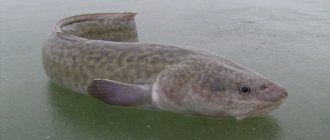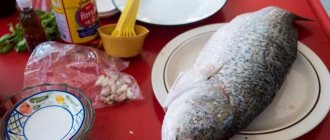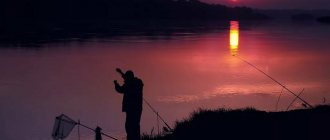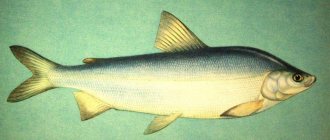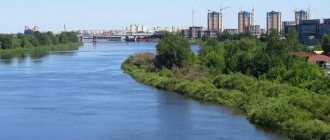What kind of fish can you catch?
Bedkash Fishing Base » What you can catchFishing in Siberia is an excellent bite throughout the year, in cold weather and on hot days, from the shore or boat. Northern Sosva, on the banks of which the fishing base "Bedkash" is located, is a legendary river in whose waters one can find pike, crucian carp, carp, bream, grayling, roach, taimen, pyzhyan, broad whitefish, burbot, tugun, peled and many other fish of various genera , types and classes. In the nearby tributaries of the river and in the lakes there are more than 100 species of fish, which will provide an excellent bite in any weather. All fishing seasons have a number of features. Fishing in the north is effective and productive at any time of the year:
- Summer – the season starts no earlier than mid-June and ends in September. To catch trophy pike, pike perch and other fish, donks, mugs, float rods, and spinning rods are actively used;
- Autumn is the best time to catch predator fish (pike, asp, pike perch, perch). The most commonly used are spinning rods, different types of baits and bait;
- Winter is the season for catching large predators (pike, burbot) with a winter fishing rod and reel. Wobblers, as well as pieces of frozen capelin, meat, and frozen live bait are used as bait and bait;
- Spring is a season of increased activity for any white fish (from large burbot and pike to roach and crucian carp), which are excellently caught using spinning tackle with moving baits of bright colors.
To clarify the conditions for recreation and order fishing in the north, call us back at the number or write a letter using the form on the website.
Grayling (lat. Thymallus) is a genus of salmon fish.
Grayling is easily distinguished by its huge dorsal fin, which when folded reaches the tongue-shaped adipose fin.
In terms of color, grayling is one of the most colorful and beautiful fish in Russia. Its back is gray-green, dotted with more or less numerous and clear black spots, the sides of the body are light gray with longitudinal stripes. Paired fins are usually dirty orange, and unpaired fins are purple with dark stripes or spots.
Grayling lives in mountainous areas and, together with trout, constitutes the main fish population of cold and fast-flowing rivers in almost all of Europe, northern and northeastern Russia and all of Siberia. Grayling lives in preferably clean water.
The main fish in the mountain rivers of the Subpolar Urals is grayling , which is found in two types: common - in the rivers of the Pechora basin and Siberian - in the rivers of the Lyapin basin. There are especially many grayling in the upper reaches of the Shchugor, Kosyu and Bol rivers. Sons, he rises here in the middle of summer, when the water in the lower reaches warms up greatly. In colder tributaries, grayling is larger (up to 1.5-2 kg), and is excellently caught on rapids and fast riffles. From June to September is the best time for fishing in the North to catch a record specimen of Siberian grayling.
Common pike (lat. Esox lucius) is a fish of the pike family. Distributed in fresh waters of Eurasia and North America.
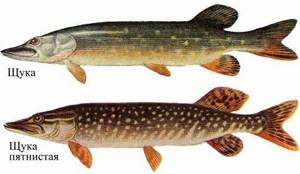
Pike is the real queen of the Northern Sovva.
Avid fishermen from all over Russia come here to catch a “trophy” beauty. And many succeed, because a pike weighing 3-4 kg is considered small by local standards, but 10-13 kg is normal, but specimens weighing 15-16 kg are quite common. It is caught using a spoon, wobbler, or jig head. Perch, or freshwater perch[1] (lat. Perca) is a genus of fish of the perch family.
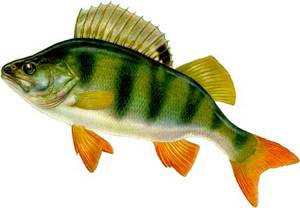
Perch weighing 1.5–3 kg is a very common fish in the rivers of the circumpolar Urals. It is caught both in summer and winter - with a spinning rod, with a float and winter fishing rods, with a donk, a track and circles, with a spinner, a wobbler, and a jig head.
The perch bite is always decisive and sure. The nozzle is grabbed greedily, energetically, without missing a beat. The float trembles and rushes into the depths; sometimes it floats a little and goes obliquely into the water.
can be caught well with a fishing rod , on average one to two kilograms, although some specimens can easily weigh three kilograms and reach sixty to seventy centimeters in length. Ide can also be caught using a spoon, wobbler, jig head, or worm.
The worm is good for catching roach : chebak , soroga .
Nelma
The color of the back is grayish-greenish, noticeably lighter than that of the whitefish. There are 18-24 gill rakers, but usually 20-21. The dorsal fin may have 16 rays. Body length reaches 1.4 m, weight up to 24 kg.
Nelma inhabits all rivers of the Arctic Ocean. In the Ob, it is very widespread: from the Ob Bay to the Novosibirsk Hydroelectric Power Station, but its numbers are small everywhere.
She leads an exclusively predatory lifestyle. Ripens at the age of 9-15 years when reaching 70 cm in length.
The main herd of nelma winters in the Ob and Taz bays. It is most numerous in the Ob in the summer-autumn period and in Northern Sosva, where it comes for spawning and wintering. Only immature individuals enter other tributaries of the Ob for feeding and wintering.
Nelma can usually be found in places where juvenile fish accumulate. The immature part of the juveniles and the spawned spawners spend the winter in the non-mortifying areas of the basin above the damming zone. With the improvement of the oxygen regime in the spring, adult fish and juveniles rise to the Ob. After feeding in the delta and floodplain of the Ob, immature individuals roll into the lip, and the spawners rise to the spawning grounds.
Peled (cheese)
The body of this species is high, laterally compressed. The mouth is terminal. There are 75–105 scales in the lateral line. There are 45–70 gill rakers. The color is silver with a dark gray back. Planktivore.
Lake and lake-river fish, capable of entering river deltas. Body length up to 50 cm. Distributed in the Arctic Ocean basin from Mezen to Kolyma. Due to its high plasticity and rapid growth rate, peled is widely acclimatized in lakes and reservoirs.
Tugun
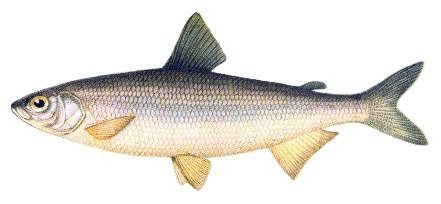
The body is low and more rounded in cross section than other members of the genus.
The mouth is terminal. The lateral line has 54-76 easily falling scales (as in some other whitefish species). There are 26-39 gill rakers. Reaches a length of 20 cm.
It lives in the rivers of Siberia from the Ob and its tributaries to the Yana (in the Northern Sosva River in the Urals it is called the Sosva herring).
Among the whitefish of the Lower Ob, Tugun stands out in that it does not make long migrations along the Ob. This is a small whitefish, but due to its excellent taste it is considered a valuable fishery object.
The life cycle of the tugun is short: most fish mature in the second year of life. They breed and feed in all Ural tributaries of the Lower Ob. There is tugun in the Taz basin and in some Yamal rivers. Tugun was observed feeding in Lake Yarato-2.
The tugun is most numerous in Northern Sosva, but has no commercial significance in other rivers.
Burbot
The body is elongated, covered with very small scales and a thick layer of mucus, which gives the impression of a naked body. There is a small mustache. The mouth is almost terminal. Two dorsal fins, the length of the base of the second is more than 5 times the length of the base of the first and slightly longer than the length of the base of the anal fin.
The body color is brownish-olive, sometimes brown with a reddish tint. There may be darker streaks on the body and fins. The belly is light.
The only purely freshwater representative of the order, reaching a body length of about 1 m and a weight of up to 20 kg (usually 60-80 cm and 5-8 kg). It lives in rivers and lakes throughout most of the country. Benthic predator, lithophile.
Burbot lives mainly in the northern part of Eurasia in fresh water bodies of various types; distributed throughout the Ob basin to the Ob, Taz and Gydan lips.
Chir (schokur, shekur)
The body is tall, laterally compressed, massive. The head is small, the mouth is lower. The scales are large and tightly fitting. There are 18-28 gill rakers. Benthophage.
The coloring of the sides is darker than that of other species of the genus. Adults often have a bronze tint on their sides. Body length is about 70 cm.
Freshwater and semi-anadromous (especially in the lower Ob basin) fish. Inhabits the northern rivers of the country from Pechora to Anadyr and Penzhinskaya Bay.
Chir in the areas closest to Yamal is known in Kara Bay and Gydan Bay. In the Gulf of Ob and reservoirs of Yamal, it is widespread. The Ob herd of white broads is associated with the southern part of the bay, the lower reaches of the Ob and its Ural tributaries.
Fishing in the North has its own characteristics - you need to take into account the season. In the second half of September - early October, spawners move up the river to breed. Whitefish spawn on the current during the dry season and under the ice. Spawning grounds are located in the middle and upper reaches of the river. After spawning, whitefish, if ice conditions on the river allow, enter lakes for wintering.
In the spring, with the appearance of open areas of water in the littoral zone, whitefish begin to emerge from the lakes and, following the flood wave, are distributed along the floodplain from the upper reaches to the delta. With the decline of the flood it descends to the lower reaches of the rivers.
Pyzhyan
The head is very small (“snub-nosed”). Mouth with a short lower jaw. There are no more than 40 gill rakers. Benthophagous.
Reaches a length of 45 cm (usually up to 35 cm). It lives in rivers and lakes of the European territory of the country and Siberia east to Kolyma.
In addition to Yamal, Siberian whitefish are widely known in Kara Bay, Gydan Bay, and the Ob. In Yamal and Ugra, whitefish is represented by two-water (lake-river) and semi-anadromous forms.
Inhabits the lake-river systems of the peninsula associated with the Baydaratskaya and Ob Bays: in the south the Oyahu and Yuribey rivers with tributaries and lakes, the Lyakka-yahu, Er-yahu, Sab-yahu rivers; in the middle part of Yamal - the Seyakha (Green) river with lakes of the Neito system, lakes Polkurto, Yambuto, Hento, the Mordyyakha river with the Seyakha (Mutnaya) tributary and lakes Yambuto, Erto, Mordy-Malto; in the north - the Tambey River.
Whitefish is the most numerous species of all whitefish inhabiting these lake-river systems. Together with peled, broad whitefish, muksun and nelma, the semi-anadromous whitefish from the Gulf of Ob rises to the rivers in the spring to feed and migrates in the opposite direction in the fall.
Common taimen, or taimen (lat. Hucho taimen) is a fish of the taimen genus of the salmon family.

The largest representative of the Salmon family, reaching 1.5-2 meters in length and 60-80 kilograms in weight.
It lives in fresh water - rivers and flowing cold-water lakes and never goes to sea. It is found in Russia over a vast territory: from the Urals (the Pechora and Kama river basins) to the eastern outskirts of Yakutia and the south of the Far East (the Yana, Aldan, Uda, Tugur, Amur rivers with their tributaries).
There are especially many taimen in Lyapin and its right mountain tributaries. Taimen is a predatory fish, takes well on a spinning rod, and bites well on a spinner above the rapids and at the confluence of tributaries. During the day it stays at the bottom of dark, deep holes near the shore, hiding under sunken trees and only occasionally appears at the surface of the water to feast on midges falling into it. Early in the morning and before sunset, taimen like to hunt in the rifts, where they hunt small fish.
Paid fishing on lakes
Paid lakes in the Chelyabinsk region are well suited for successful fishing. Reservoirs are regularly stocked with fish, so you can be guaranteed to catch good specimens. In addition, paid reservoirs in the Chelyabinsk region are relatively inexpensive. For little money you can go fishing well.
Aydykul, Aktobe, Alabuga
Aydykul
The lake is medium in size, up to five meters deep. There is a recreation center on the shore of Aydykul. Fish are caught both from the shore and on boats. The lake contains:
- crucian carp,
- perch,
- whitefish,
- pike.
On the downside: many people vacation on Aydykul on weekends, and sometimes finding a good place for fishing is not easy.
Aktobe
Area - twenty square kilometers. Depth - four to five meters. The reservoir is often stocked with fish, so large crucian carp, pike, and carp live here. And there are also roaches and whitefish. There is a recreation center on the shore of the lake.
Alabuga
The average depth is five meters. There are holiday houses on the shore of the reservoir. The lake contains valuable species of fish:
- sturgeon,
- sterlet,
- whitefish,
- trout.
And here you can catch crucian carp, tench, carp, perch, pike, and grass carp.
Baynaush, Kaldy, Tatysh
Baynaush
The area of the lake is more than eight kilometers, the depth is one and a half meters . Despite the shallow depth, there are a lot of fish here. Some lucky fishermen managed to catch carp weighing three kilograms here. And also in Baidaush there is:
- crucian carp,
- perch,
- peled,
- whitefish.
Reviews of this lake vary, but most anglers love it.
Kaldy
Quite a large lake, about twenty kilometers square. Depth - up to seven meters. They fish here both from the shore and on boats. Found in Kaldy:
- crucian carp,
- perch,
- carp,
- bream,
- tench,
- trout.
Fishermen love this lake, because rarely does anyone return from here without a good catch . But there are a lot of people who want to fish here, so there is not always a good place for fishing.
Tatysh
A small body of water with an area of about two kilometers square. You can pitch a tent on the shore. And there is also a recreation center.
Lake Tatysh is home to large carp, pike-perch and perch. They fish here both from the shore and on boats.
